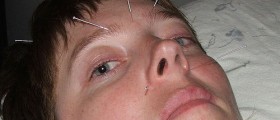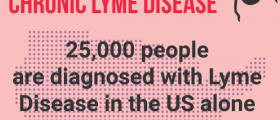
The medical condition in which one side of the face cannot move voluntary is known as paralysis of the face. People affected by this condition can’t move muscles or nerves on the face. Besides obvious problem with the face, some normal, everyday actions are also very difficult for these patients. They can’t smile, whistle, blink or even raise their eyebrows. Because of the inability to voluntarily shut their eyes, these patients can suffer from burning in the eyes. Loss of control over the mouth can cause drooling and men suffering from facial paralysis have shaving difficulties.
Facial Paralysis Diagnostic Procedures
Paralysis of the face may be only transient condition or affect people permanently and be a serious medical condition. The cause of the problem determines the treatment, and your doctor might conduct a series of tests to identify the exact cause of the paralysis. The most common are blood and lyme tests, CT and MRI scans and electromyography.Common Causes of Facial Paralysis
Birth trauma, Bell’s Palsy, stroke and traumatic injuries during the surgical procedures are some of the possible causes of paralysis of the face. Stroke patients experience a bit different face paralysis, since they can close their eye on the side of the face affected by paralysis. People suffering from Lyme diseases, sarcoidosis or certain infections can also experience facial paralysis. Patients having brain tumors are prone to paralysis of the face, usually presented with headaches, hearing problems and sometimes seizures.Trauma before or at birth, especially if there was some pressure on the facial nerves can result in paralysis of the face in newborns. First symptoms are usually detected when the baby cries, because their mouth won’t move similarly in both directions and the affected eyelid can’t close completely. The root of this problem is still unknown, but doctors suggest that some of the risk factors may be mom’s medical condition (diabetes) or even the use of medications for stronger contractions or anesthesia during the childbirth. The problem in newborns usually resolves without any treatment, but if it doesn’t there is a special therapy developed for these infants.
Bell’s Palsy is the condition characterized by the inflammation of the facial nerves. This condition, also known as idiopathic peripheral facial palsy is responsible for over 75% of the facial paralysis diagnosed in adults. However, this condition can affect both children and adults, and it is most likely to be found in the age group from 15 to 45. Bell’s Palsy is known to happen overnight, at first as the weakness at one side of the face, and then as paralysis of facial muscles. One of identified risk factors for this condition is Herpes simplex virus. The virus affects diabetic and pregnant women more than any other group of people. In more than 70% of all Bell’s Palsy cases patients recover completely, even without any treatment. It is hard to estimate the duration of recovery, because it may last from several weeks up to 6 months, and your doctor might prescribe anti-viral or steroid medications, to speed up the recovery. For some of the unlucky patients dealing with long-term consequences of Bell’s Palsy, surgery is one of the treatment options.














_f_280x120.jpg)


Your thoughts on this
Loading...